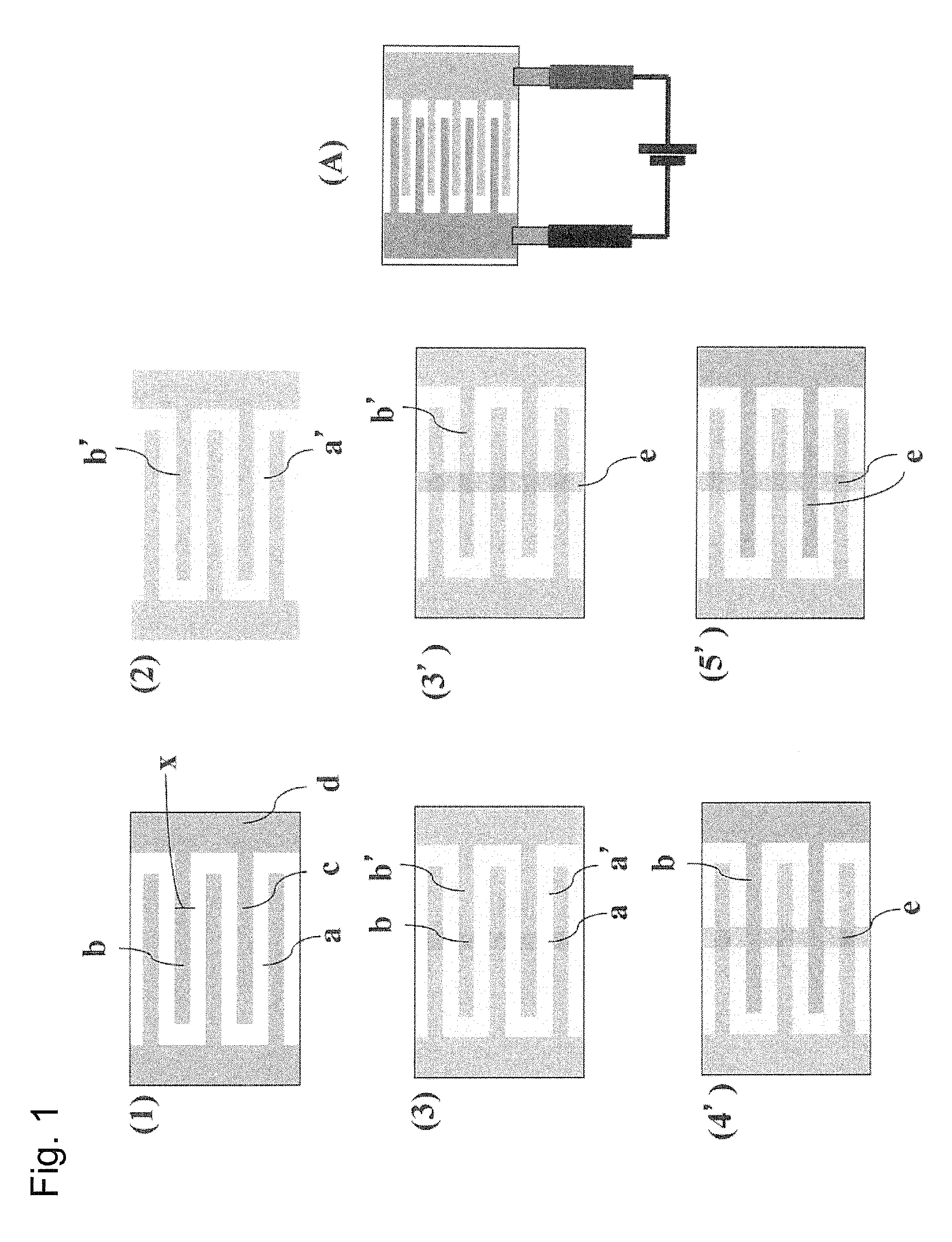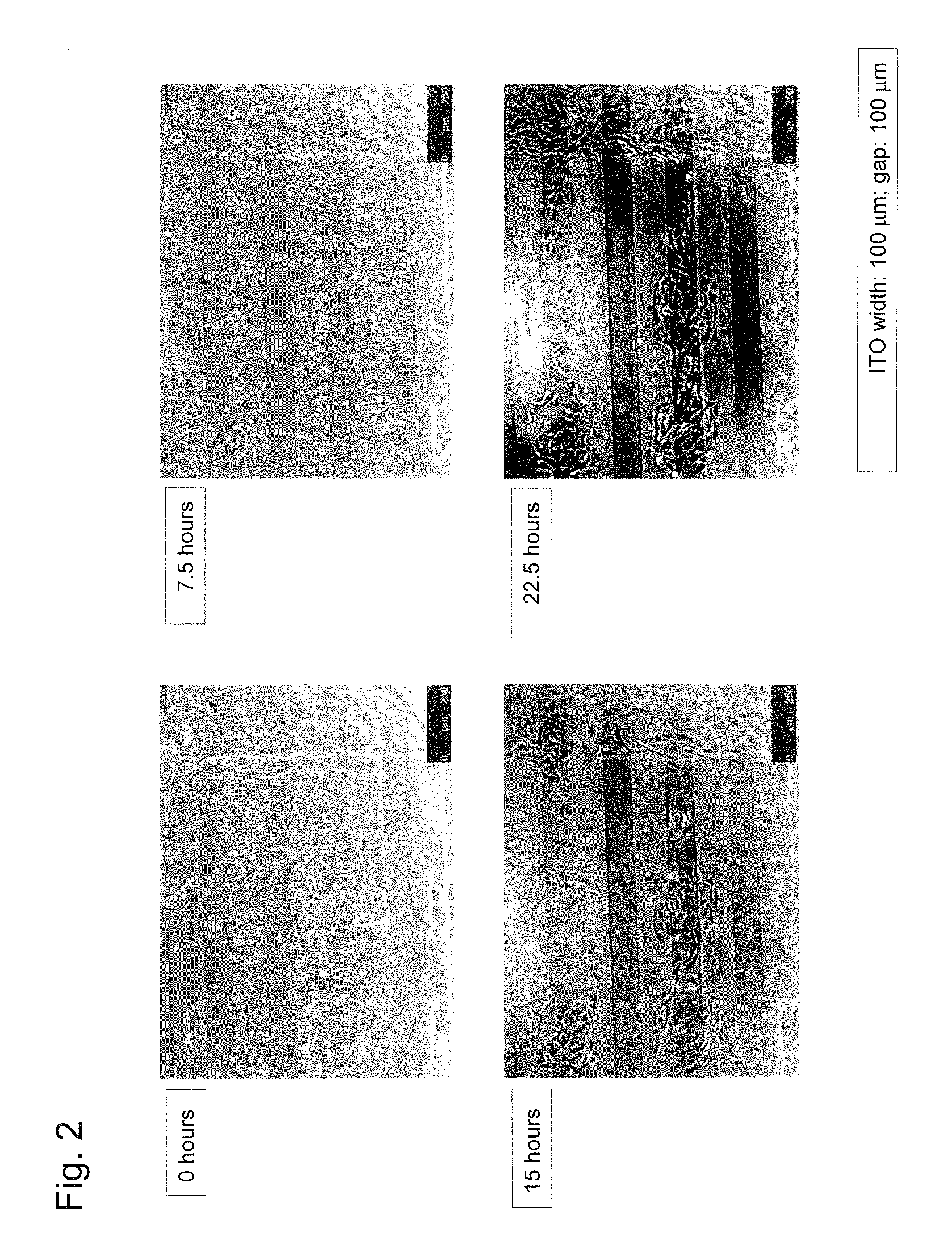Substrate used for cell migration assays and method for cell migration assays
a technology of assays and substrates, applied in the field of substrates used methods for cell migration assays, can solve the problems of disadvantageous substrates, difficult control of the direction of cell migration of adhered cells, and inability to survive for a long period of tim
- Summary
- Abstract
- Description
- Claims
- Application Information
AI Technical Summary
Benefits of technology
Problems solved by technology
Method used
Image
Examples
examples
1. Production of Electrode Base Material
[0138]An indium tin oxide (ITO) membrane was provided on a 10 cm×10 cm square alkali-free glass to a thickness of 150 nm by sputtering, and the resulting membrane was subjected to resist coating, exposure using a photomask, development, and etching to prepare a comb-shaped ITO electrode base material with a line width of 100 μm (FIG. 1(1)).
2. Production of Substrate Used for Cell Culture
(First-Phase Reaction)
[0139]While agitating a mixture of 39.0 g of toluene and 750 μl of epoxysilane TSL8350 (GE Toshiba Silicones Co., Ltd.), a catalytic amount of triethylamine was added thereto, and the mixture was further agitated at room temperature for several minutes. The ITO base material neuron network washed with UV application was soaked in the epoxysilane solution, followed by agitation at room temperature for 19 hours. Thereafter, the ITO base material provided with an undercoat was washed with ethanol, rinsed, and then dried.
(Second-Phase Reaction...
PUM
 Login to View More
Login to View More Abstract
Description
Claims
Application Information
 Login to View More
Login to View More - R&D
- Intellectual Property
- Life Sciences
- Materials
- Tech Scout
- Unparalleled Data Quality
- Higher Quality Content
- 60% Fewer Hallucinations
Browse by: Latest US Patents, China's latest patents, Technical Efficacy Thesaurus, Application Domain, Technology Topic, Popular Technical Reports.
© 2025 PatSnap. All rights reserved.Legal|Privacy policy|Modern Slavery Act Transparency Statement|Sitemap|About US| Contact US: help@patsnap.com



